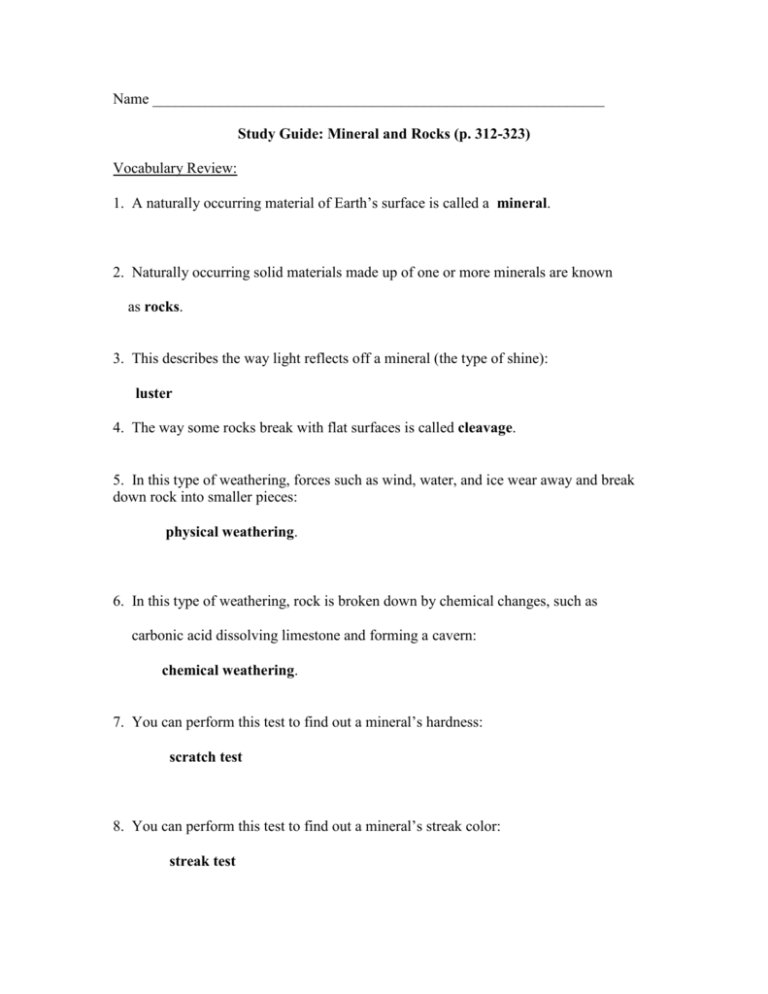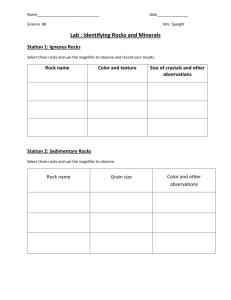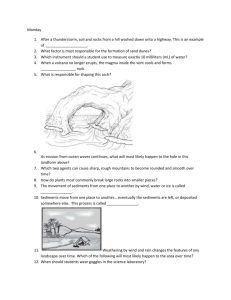study guide key
advertisement

Name ____________________________________________________________ Study Guide: Mineral and Rocks (p. 312-323) Vocabulary Review: 1. A naturally occurring material of Earth’s surface is called a mineral. 2. Naturally occurring solid materials made up of one or more minerals are known as rocks. 3. This describes the way light reflects off a mineral (the type of shine): luster 4. The way some rocks break with flat surfaces is called cleavage. 5. In this type of weathering, forces such as wind, water, and ice wear away and break down rock into smaller pieces: physical weathering. 6. In this type of weathering, rock is broken down by chemical changes, such as carbonic acid dissolving limestone and forming a cavern: chemical weathering. 7. You can perform this test to find out a mineral’s hardness: scratch test 8. You can perform this test to find out a mineral’s streak color: streak test 9. What are the three minerals found in granite? feldspar, quartz, and mica 10. What does the Mohs’ scale tell about a mineral? the hardness 11. Rocks with a number 2 on the Mohs’ scale would be considered soft 12. Rocks with a number 9 on the Mohs’ scale would be considered hard 13. Which mineral is the hardest on the Mohs’ scale? diamond 14. If a rock was being described as shiny, glassy, or metallic what property is being described? luster 15. Can you always tell a mineral’s streak color just by looking at the mineral? No. The streak color is not always the same as the color you see on the rock itself. A. igneous rocks B. sedimentary rocks C. metamorphic rocks 16. B These rocks form from debris like sand, shells, soil, and pebbles that settle in water and are squeezed under millions of years of pressure. 17. C These rocks form when other rocks are changed by heat and pressure. 18. A These rocks form when magma or lava cools and hardens into a solid. 19. Name 5 properties used to identify minerals and rocks. color, streak color, texture, luster, hardness 20.-27. Write each rock in the correct group: sandstone obsidian limestone marble gneiss granite pumice slate Igneous Obsidian Granite Pumice Sedimentary sandstone limestone Metamorphic marble gneiss slate 28. Which process continually changes rock from one kind to another over long periods of time? The rock cycle 29. Complete this sentence: All rock comes from other rock. (See p. 322 in your book if you are stumped.)






